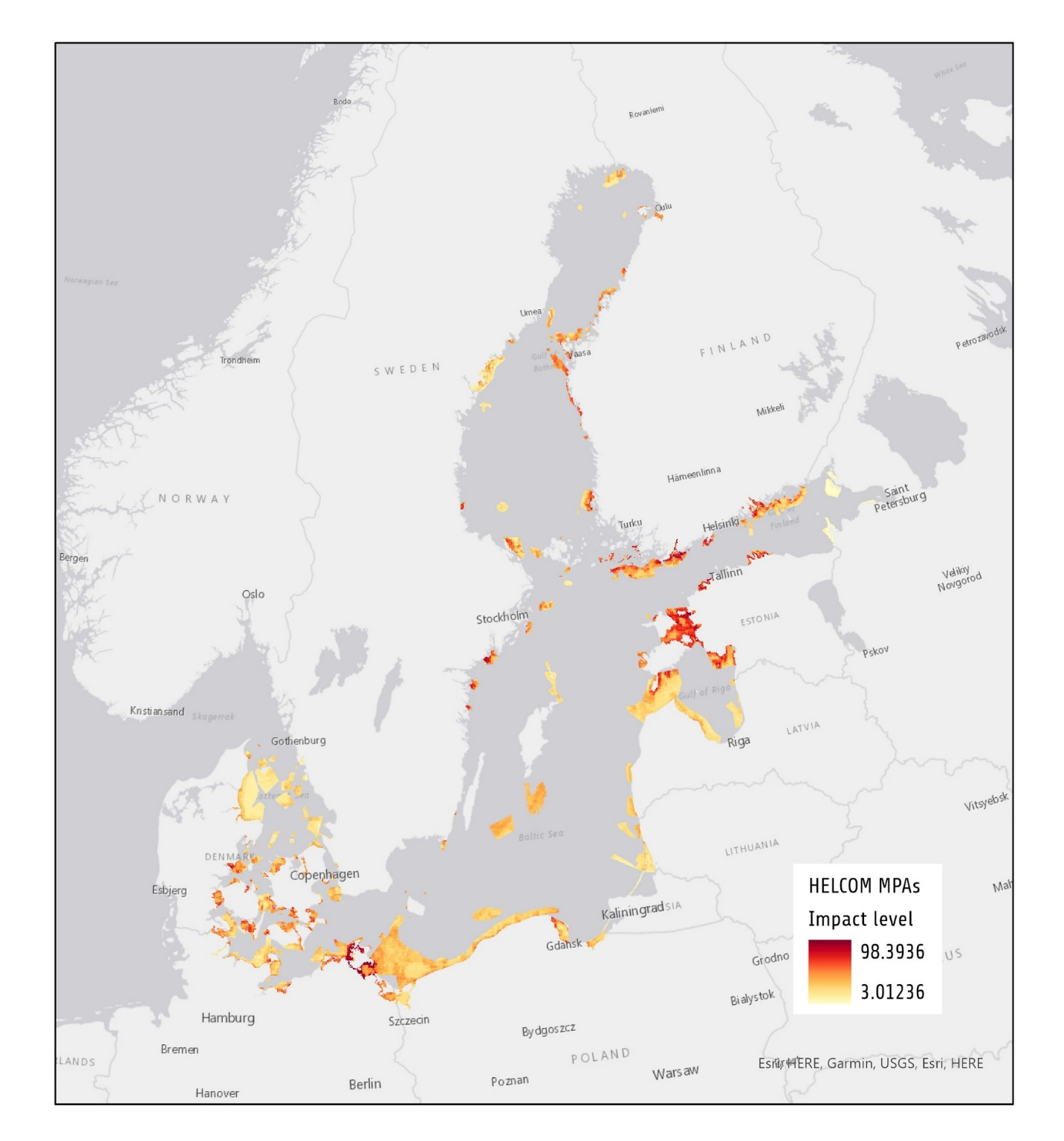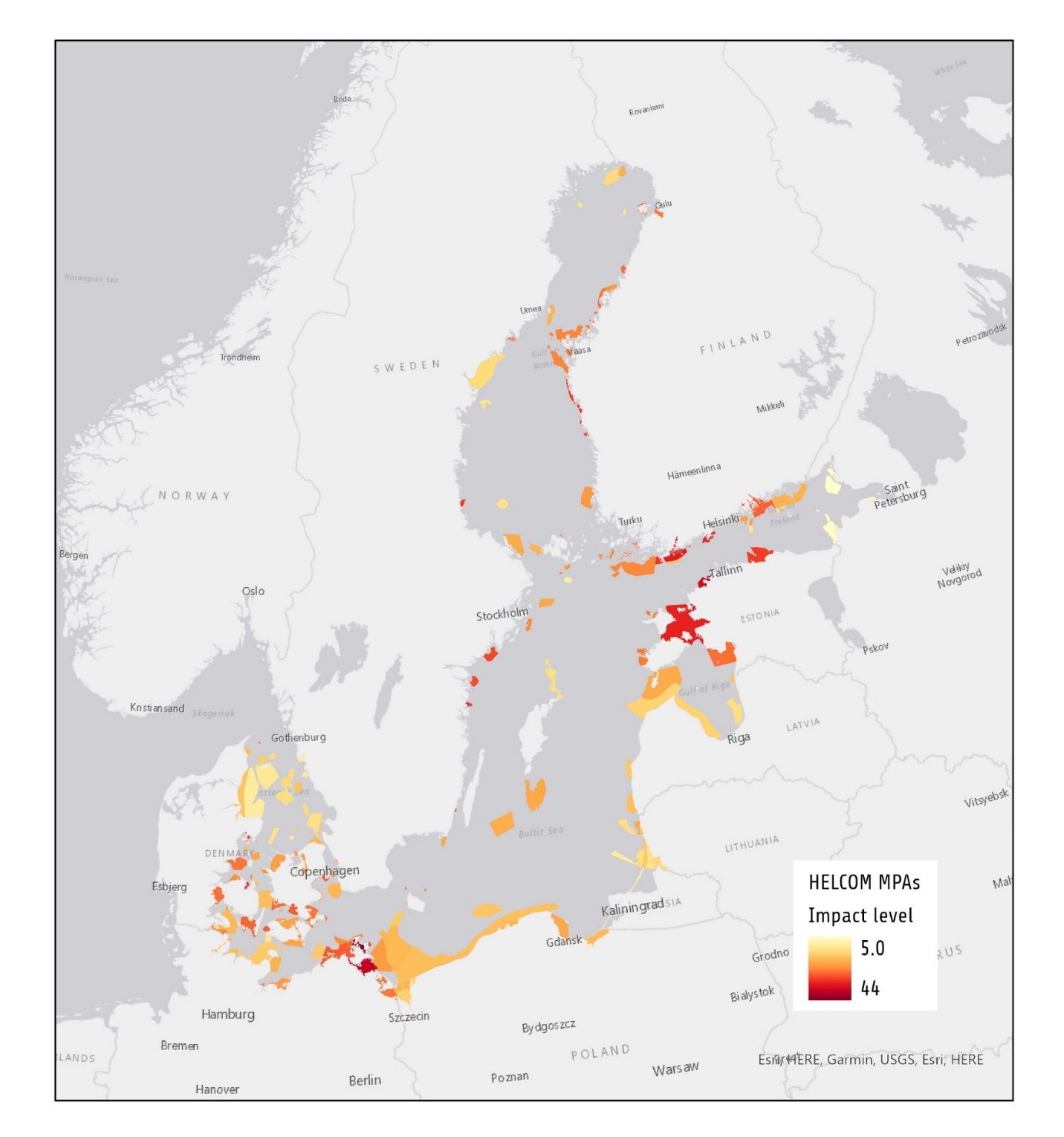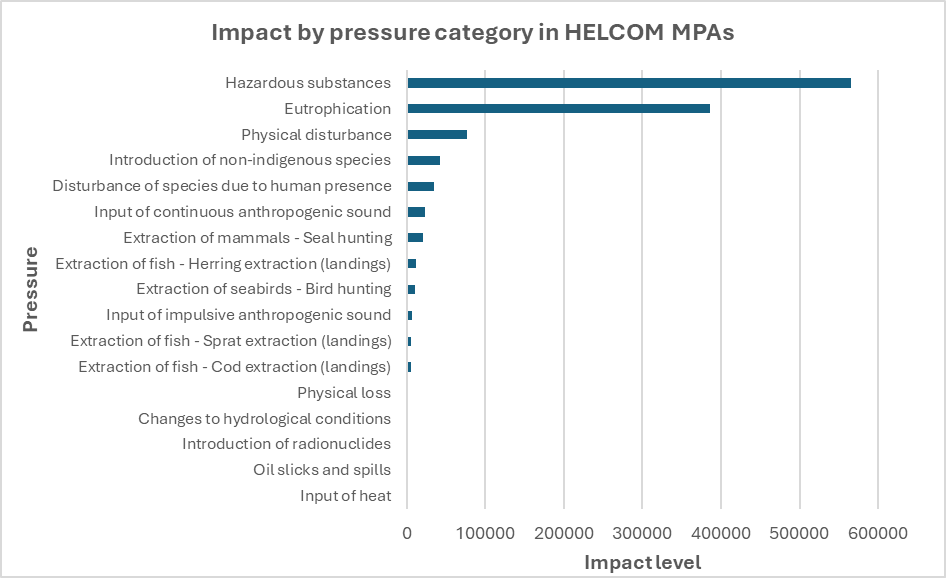Application of the HELCOM SPIA Tool for HELCOM MPAs#
Description#
Introduction
MSP4BIO Baltic Sea test site performed a detailed analysis of spatial pressures and impacts within HELCOM Marine Protected Areas (MPAs) using the HELCOM SPIA tool. The exercise includes the evaluation of various environmental pressures, ecosystem components, and the level of human impact inside the MPAs. The aim of the assessment is to identify the most impacted ecosystem components, the most significant pressures in HELCOM MPAs, and also to highlight the most affected MPAs.
Most impacted ecosystem components in HELCOM MPAs
Through the analysis, certain ecosystem components were found to be more impacted than others in HELCOM MPAs. Bottom-water habitats not influenced by permanent stratification showed the highest total impact. The primary pressures affecting this component were physical disturbance, eutrophication and hazardous substances. In addition, grey seals and harbour porpoises were highly affected, likely due to pressures such as input of continuous anthropogenic sound.
Most significant pressures causing impact
The analysis reveals that the contribution of hazardous substances and eutrophication were among the highest pressures causing impact inside HELCOM MPAs. These pressures are largely driven by land-based activities, such as industrial discharges and agricultural runoff, which release pollutants and excess nutrients into the Baltic Sea. Despite MPAs being established to protect critical ecosystems, they often lack the regulatory authority to control or limit these external pressures. This highlights a crucial management challenge: while MPAs can regulate direct human activities like fishing or tourism within their boundaries, they remain vulnerable to diffusing, widespread pressures originating outside their jurisdiction. Understanding the significant contribution of hazardous substances and eutrophication is essential for informing broader regional strategies that target these issues at their source. Several other pressures, such as physical disturbance, non-indigenous species, disturbance from human presence, and anthropogenic sound, are also highly relevant within HELCOM MPAs. Physical disturbance from activities like bottom trawling can degrade sensitive seabed habitats, while non-indigenous species, introduced through shipping, can disrupt local ecosystems by outcompeting native species. Human presence in areas critical for breeding or feeding disrupts wildlife behavior, particularly for birds and marine mammals, reducing reproductive success. Additionally, anthropogenic sound from shipping and construction interferes with species that rely on sound for navigation and communication. Though MPAs can regulate some local activities, mitigating these pressures often requires broader regional and international actions.
Most Impacted HELCOM MPAs
HELCOM MPAs |
Country |
Mean impact |
|---|---|---|
Rügensche Bodden |
Germany |
43.86236 |
Greifswalder Bodden und Strelasund |
Germany |
38.05835 |
Pakri |
Estonia |
36.7603 |
Porvoonjoen suisto - Stensböle /Porvoonjoki estuary-Stensböle |
Finland |
34.44609 |
Tammisaaren ja Hangon saariston ja Pohjanpitäjänlahden merensuojelualue /Tammisaari and Hanko Archipelago-and Pojo Bay marine proteciton area |
Finland |
34.01314 |
Väinameri |
Estonia |
33.47418 |
Kirkkonummen saaristo/ Kirkkonummi Archipelago |
Finland |
33.25499 |
Odense Fjord |
Denmark |
32.19698 |
Kvädöfjärden med Torrö |
Sweden |
31.88792 |
Tulliniemen linnustonsuojelualue/ Tulliniemi bird protection area |
Finland |
31.56984 |
Resources#
SPIA tool outcome showing the most impacted areas in HELCOM MPAs.

Red represents high impact and yellow represents the low impact areas.
HELCOM MPAs by their mean impact score.

Red represents high impact and yellow represents the low imp
Impact level by pressure category in HELCOM MPAs

Most impacted ecosystem components in HELCOM MPAs

Most impacted MPA